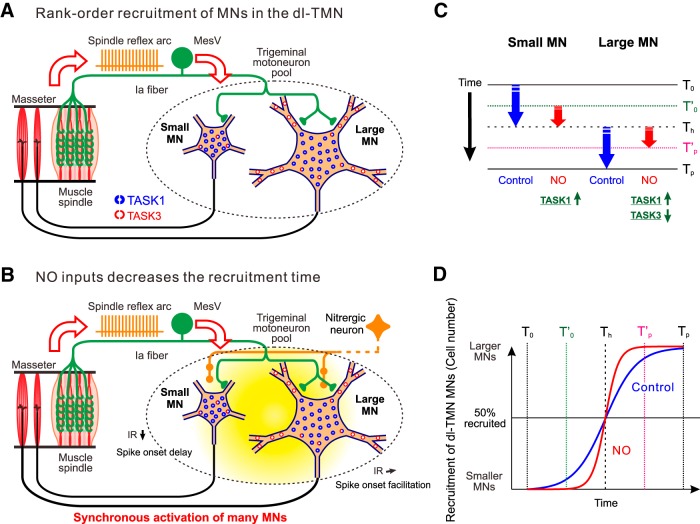Figure 10.
Rank-ordered recruitment of αMNs in the dl-TMN and its modulation by NO inputs. A, During the isometric contraction of JC muscles, αMNs in the dl-TMN are recruited in rank order from smaller to larger αMNs in response to the activation of Ia afferents. B, When NO is released in the TMN by the activity of nitrergic neurons, IRs in small αMNs are decreased, and subsequently increase the spike-onset latencies. By contrast, in relatively large αMNs, NO either hardly changes or slightly increases IRs, subsequently causing no increase or a slight decrease in the spike-onset latencies, while it facilitates recruitment of the largest αMNs. Consequently, NO causes a more synchronous activation of smaller and larger αMNs. C, Alteration of the recruitment of small and large αMNs in the dl-TMN by the activation of NO inputs. T0, Recruitment-onset time; Th, time at which half of αMNs are recruited and from which large αMNs start to be recruited; Tp, time at which all the αMNs are recruited; T’0, recruitment onset time after the activation of NO inputs; T’p, time at which all the αMNs are recruited after the activation of NO inputs. D, Schematic diagram of the slow and fast rank-ordered recruitment observed before and after the activation of NO inputs, respectively. Slow precise and fast ballistic force increases can be achieved through the modulation of TASK1/TASK3 channels by NO inputs.

